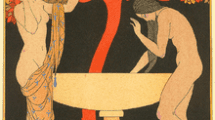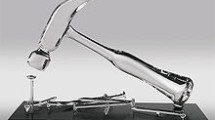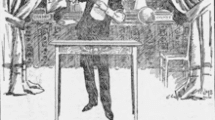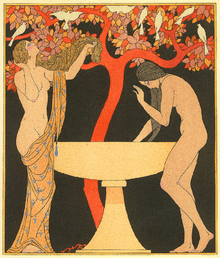English medical hoaxer
Mary ToftMary Toft, in an engraving based on a painting by John Laguerre in 1726BornMary Denyerc. 1701Died1763 (aged 62)NationalityEnglish/BritishKnown forMedical hoax
Mary Toft (née Denyer; c. 1701–1763), also spelled Tofts, was an English woman from Godalming, Surrey, who in 1726 became the subject of considerable controversy when she tricked doctors into believing that she had given birth to rabbits.
In 1726, Toft became pregnant, but following her reported fascination with the sighting of a rabbit, she miscarried. Her claim to have given birth to various animal parts prompted the arrival of John Howard, a local surgeon, who investigated the matter. He delivered several pieces of animal flesh and duly notified other prominent physicians, which brought the case to the attention of Nathaniel St. André, surgeon to the Royal Household of King George I.
St. André concluded that Toft’s case was genuine but the king also sent surgeon Cyriacus Ahlers, who remained skeptical. By then quite famous, Toft was brought to London where she was studied in detail; under intense scrutiny and producing no more rabbits she confessed to the hoax, and was subsequently imprisoned as a fraud.
The resultant public mockery created panic within the medical profession and ruined the careers of several prominent surgeons. The affair was satirised on many occasions, not least by the pictorial satirist and social critic William Hogarth, who was notably critical of the medical profession’s gullibility. Toft was eventually released without charge and returned home.
Account[edit]
The story first came to the public’s attention in late October 1726, when reports began to reach London.[1] An account appeared in the Mist’s Weekly Journal, on 19 November 1726:
From Guildford comes a strange but well-attested Piece of News. That a poor Woman who lives at Godalmin [sic], near that Town, was about a Month past delivered by Mr John Howard, an Eminent Surgeon and Man-Midwife, of a creature resembling a Rabbit but whose Heart and Lungs grew without [outside] its Belly, about 14 Days since she was delivered by the same Person, of a perfect Rabbit: and in a few Days after of 4 more; and on Friday, Saturday, Sunday, the 4th, 5th, and 6th instant, of one in each day: in all nine, they died all in bringing into the World. The woman hath made Oath, that two Months ago, being working in a Field with other Women, they put up a Rabbit, who running from them, they pursued it, but to no Purpose: This created in her such a Longing to it, that she (being with Child) was taken ill and miscarried, and from that Time she hath not been able to avoid thinking of Rabbits. People after all, differ much in their Opinion about this Matter, some looking upon them as great Curiosities, fit to be presented to the Royal Society, etc. others are angry at the Account, and say, that if it be a Fact, a Veil should be drawn over it, as an Imperfection in human Nature.— Weekly Journal, 19 November 1726[2]
The ‘poor Woman’, Mary Toft, was twenty-four or twenty-five years old. She was baptised Mary Denyer on 21 February 1703, the daughter of John and Jane Denyer. In 1720 she married Joshua Toft, a journeyman clothier and together the couple had three children, Mary, Anne and James.[3][4] As an 18th-century English peasant, circumstances dictated that when in 1726 Toft again became pregnant, she continue working in the fields.[5] She complained of painful complications early in the pregnancy and in early August egested several pieces of flesh, one “as big as my arm”. This may have been the result of an abnormality of the developing placenta, which would have caused the embryo to stop developing and blood clots and flesh to be ejected.[6][7][8] Toft went into labour on 27 September. Her neighbour was called and watched as she produced several animal parts. This neighbour then showed the pieces to her mother and to her mother-in-law, Ann Toft, who by chance was a midwife. Ann Toft sent the flesh to John Howard, a Guildford-based man-midwife of thirty years’ experience.[6][9]
Initially, Howard dismissed the notion that Toft had given birth to animal parts, but the next day, despite his reservations, he went to see her. Ann Toft showed him more pieces of the previous night’s exertions, but on examining Mary, he found nothing. When Mary again went into labour, appearing to give birth to several more animal parts, Howard returned to continue his investigations. According to a contemporary account of 9 November, over the next few days he delivered “three legs of a Cat of a Tabby Colour, and one leg of a Rabbet: the guts were as a Cat’s and in them were three pieces of the Back-Bone of an Eel … The cat’s feet supposed were formed in her imagination from a cat she was fond of that slept on the bed at night.” Toft seemingly became ill once more and over the next few days delivered more pieces of rabbit.[6][8]
As the story became more widely known, on 4 November Henry Davenant, a member of the court of King George I, went to see for himself what was happening. He examined the samples Howard had collected and returned to London, ostensibly a believer. Howard had Toft moved to Guildford, where he offered to deliver rabbits in the presence of anyone who doubted her story.[10][11] Some of the letters he wrote to Davenant to notify him of any progress in the case came to the attention of Nathaniel St. André, since 1723 a Swiss surgeon to the Royal Household.[12] St. André would ultimately detail the contents of one of these letters in his pamphlet, A short narrative of an extraordinary delivery of rabbets (1727):
SIR,
Since I wrote to you, I have taken or deliver’d the poor Woman of three more Rabbets, all three half grown, one of them a dunn Rabbet; the last leap’d twenty three Hours in the Uterus before it dy’d. As soon as the eleventh Rabbet was taken away, up leap’d the twelfth Rabbet, which is now leaping. If you have any curious Person that is pleased to come Post, may see another leap in her Uterus, and shall take it from her if he pleases; which will be a great Satisfaction to the Curious: If she had been with Child, she has but ten Days more to go, so I do not know how many Rabbets may be behind; I have brought the Woman to Guildford for better Convenience.
I am, SIR, Your humble Servant,
JOHN HOWARD.[13]
Investigation[edit]
A coloured engraving of Nathaniel St. AndréKing George I was fascinated by the case.
By the middle of November the British Royal Family were so interested in the story that they sent St. André and Samuel Molyneux, secretary to the Prince of Wales, to investigate. Apparently, they were not disappointed; arriving on 15 November they were taken by Howard to see Toft, who within hours delivered a rabbit’s torso.[1] St. André’s account details his examination of the rabbit. To check if it had breathed air, he placed a piece of its lung in water to see if it would float—which it did. St. André then performed a medical examination on Toft, and concluded that the rabbits were bred in her Fallopian tubes.
In the doctors’ absence, Toft later that day reportedly delivered the torso of another rabbit, which the two also examined.[11][14] They again returned that evening to find Toft again displaying violent contractions. A further medical examination followed, and St. André delivered some rabbit skin, followed a few minutes later by a rabbit’s head. Both men inspected the egested pieces of flesh, noting that some resembled the body parts of a cat.[15]
Fascinated, the king then sent surgeon Cyriacus Ahlers to Guildford. Ahlers arrived on 20 November and found Toft exhibiting no signs of pregnancy. He may have already suspected the affair was a hoax and observed that Toft seemed to press her knees and thighs together, as if to prevent something from “dropping down”. He thought Howard’s behaviour just as suspicious, as the man-midwife would not let him help deliver the rabbits—although Ahlers was not a man-midwife and in an earlier attempt had apparently put Toft through considerable pain.[16] Convinced the affair was a hoax, he lied, telling those involved that he believed Toft’s story, before making his excuses and returning to London, taking specimens of the rabbits with him. Upon closer study, he reportedly found evidence of them having been cut with a man-made instrument, and noted pieces of straw and grain in their droppings.[1][17]
On 21 November Ahlers reported his findings to the king and later to “several Persons of Note and Distinction”.[18] Howard wrote to Ahlers the next day, asking for the return of his specimens.[17] Ahlers’ suspicions began to worry both Howard and St. André, and apparently the king, as two days later St. André and a colleague were ordered back to Guildford.[16][19] Upon their arrival they met Howard, who told St. André that Toft had given birth to two more rabbits. She delivered several portions of what was presumed to be a placenta but she was by then quite ill, and suffering from a constant pain in the right side of her abdomen.[16][20]
In a pre-emptive move against Ahlers, St. André collected affidavits from several witnesses, which in effect cast doubt on Ahlers’ honesty, and on 26 November gave an anatomical demonstration before the king to support Toft’s story.[19][21] According to his pamphlet, neither St. André nor Molyneux suspected any fraudulent activity.[22]
St. André was ordered by the king to travel back to Guildford and to bring Toft to London, so that further investigations could be carried out. He was accompanied by Richard Manningham, a well-known obstetrician who was knighted in 1721, and the second son of Thomas Manningham, Bishop of Chichester.[16] He examined Toft and found the right side of her abdomen slightly enlarged. Manningham also delivered what he thought was a hog’s bladder—although St. André and Howard disagreed with his identification—but became suspicious as it smelled of urine. Nevertheless, those involved agreed to say nothing in public and on their return to London on 29 November lodged Toft in Lacey’s Bagnio, in Leicester Fields.[19][23][24]
Examination[edit]





